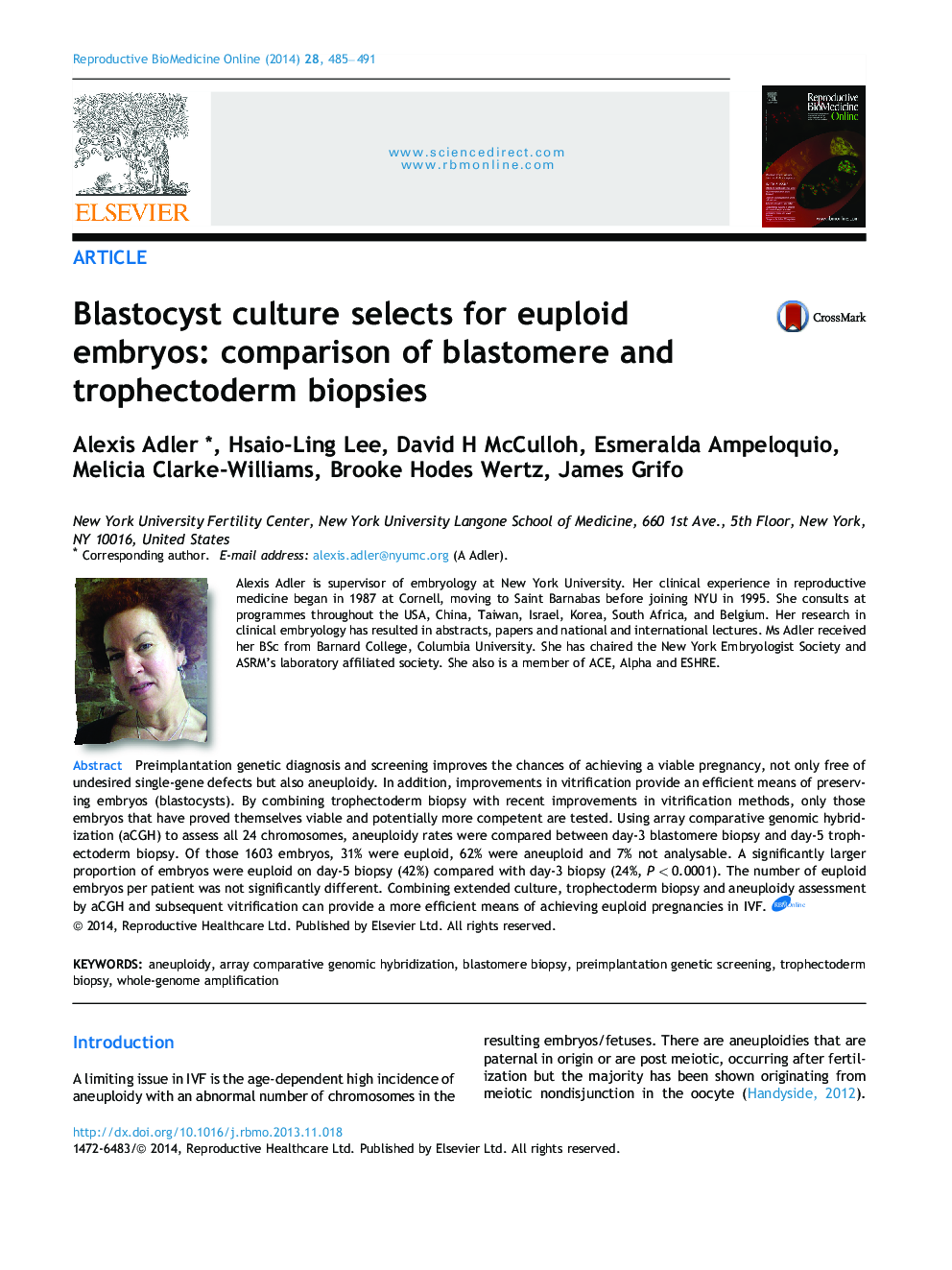| Article ID | Journal | Published Year | Pages | File Type |
|---|---|---|---|---|
| 3970202 | Reproductive BioMedicine Online | 2014 | 7 Pages |
Abstract
Preimplantation genetic diagnosis and screening improves the chances of achieving a viable pregnancy, not only free of undesired single-gene defects but also aneuploidy. In addition, improvements in vitrification provide an efficient means of preserving embryos (blastocysts). By combining trophectoderm biopsy with recent improvements in vitrification methods, only those embryos that have proved themselves viable and potentially more competent are tested. Using array comparative genomic hybridization to assess all 24 chromosomes, aneuploidy rates were compared between day-3 blastomere biopsy and trophectoderm biopsy. Of those 1603 embryos, 31% were euploid, 62% were aneuploid and 7% not analysable. A significantly larger proportion of embryos were euploid with trophectoderm biopsy (42%) compared with blastomere biopsy (24%, PÂ <Â 0.0001). The number of euploid embryos per patient was not significantly different. Combining extended culture, trophectoderm biopsy and aneuploidy assessment by array comparative genomic hybridization and subsequent vitrification can provide a more efficient means of achieving euploid pregnancies in IVF.
Keywords
Related Topics
Health Sciences
Medicine and Dentistry
Obstetrics, Gynecology and Women's Health
Authors
Alexis Adler, Hsaio-Ling Lee, David H. McCulloh, Esmeralda Ampeloquio, Melicia Clarke-Williams, Brooke Hodes Wertz, James Grifo,
